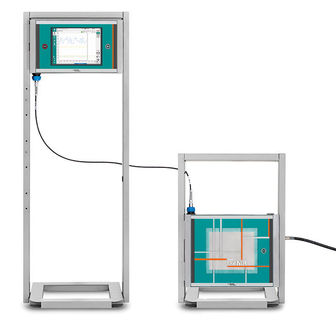To use all functions of this page, please activate cookies in your browser.
my.bionity.com
With an accout for my.bionity.com you can always see everything at a glance – and you can configure your own website and individual newsletter.
- My watch list
- My saved searches
- My saved topics
- My newsletter
Bacillus cereus
Bacillus cereus is an endemic, soil-dwelling, Gram-positive, rod shaped, beta hemolytic bacteria that causes foodborne illness.[1] It is the cause of "Fried Rice Syndrome". B. cereus bacteria are facultative aerobes, and like other members of the genus Bacillus can produce protective endospores. Product highlightPathogenesisB. cereus is responsible for a minority of foodborne illnesses (2–5%). It is known to create heavy nausea, vomiting, and abdominal periods. [2] Generally speaking, Bacillus foodborne illnesses occur due to survival of the bacterial spores when food is improperly cooked.[3] This problem is compounded when food is then improperly refrigerated, allowing the spores to germinate.[4] Bacterial growth results in production of enterotoxin, and ingestion leads to two types of illness, diarrheal and emetic syndrome.[5]
It was previously thought that the timing of the toxin production might be responsible for the two different types, but in fact the emetic syndrome is caused by a toxin called cereulide that is found only in emetic strains and is not part of the 'standard toolbox' of B. cereus. Cereulide a dodecadepsipeptide produced by non-ribosomal peptide synthesis (NRPS), which is somewhat unusual in itself. It was shown independently by two research groups to be encoded on a plasmid, which is called pCERE01 [7] or pBCE4810 [8]. Interestingly, this plasmid shares a common backbone with the virulence plasmid pXO1, which encodes the anthrax toxin genes in B. anthracis, but with a different pathogenicity island. Periodontal isolates of B. cereus also possess distinct pXO1-like plasmids. References
Categories: Bacillaceae | Foodborne illnesses |
||||||||||||||||||||
| This article is licensed under the GNU Free Documentation License. It uses material from the Wikipedia article "Bacillus_cereus". A list of authors is available in Wikipedia. |







